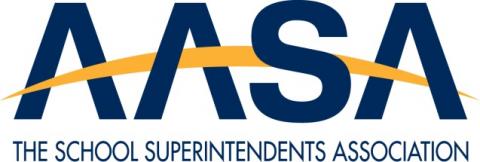
Percentage of Low-Income Students in All Public Schools, 2011
Healthy kids do better in schools. Students who are healthy are better able to focus on what’s being taught in class and they’re less likely to be absent due to illness. Instructional time is vital to student success and schools can do a lot to make sure students are in class, healthy, and ready to learn. We also know the following:
-
The number of low income children in public schools is growing.
-
These are the students who need the most assistance.
-
They live in areas where the per pupil expenditures have not grown to match the numbers in poverty.
-
They generally are more likely to score lowest on school tests, fall behind in school, fail to graduate, never receive a college degree, lack access to adequate student support services and health care.
Percentage of Low-Income Students in All Public Schools, 2011
Since 2011 AASA, the School Superintendents Association has been working with local school districts to make sure students have one less barrier to good health. Working with the Childrens Defense Fund (CDF), with funding from the Centers for Medicaid and Medicare Services (CMS) and additional support from the California Community Foundation and Atlantic Philanthropies, AASA has worked with districts in California, Georgia, Louisiana, Mississippi, and Texas to identify and enroll uninsured students in CHIP or Medicaid. Children and teens can get regular check-ups, shots, doctor and dentist visits, hospital care, mental health services, prescriptions and more. Adults can get a rich set of health benefits, too. More information about our work can be found here: http://www.pageturnpro.com/AASA/52801-School-Governance-Leadership-Fall-2013/index.html#1
AASA and CDF’s primary strategy for working with schools is to include a question about health insurance status on the annual student registration forms. This helps the schools identify children who still need coverage and take the steps necessary to get them enrolled. We also worked closely with school district teams to understand their districtwide student databases and reporting features so we could track progress.
What’s the value of the school-based health outreach and enrollment initiative? Clarke County (Georgia) School Superintendant, Dr. Phillip Lanoue, provides an answer:
“We’ve made a lot of [academic] gains in the last four years, but we are not going to make the next level of gains unless we are working with healthy children… The exciting thing about this project was the opportunity to merge our strong goals around academic performance with our equally strong goals around healthy children… Our kids need to have regular health check-ups…they need to have their prescriptions. Our agencies are working really tightly with us and our school nurses to make sure that happens.
The number one thing I would say to my colleagues, other superintendents: If you believe it, you need to lead it … you need to be the voice for healthy children.”
Listen to Dr. Lanoue’s brief remarks at …http://youtu.be/7VbjIwRqRqE
To learn more about Medicaid and CHIP and how to enroll, visit your state’s Medicaid agency or HealthCare.gov. Or call 1-877-KIDS-NOW (1-877-543-7669).



The views and opinions expressed in this post are those of the author(s) and do not necessarily reflect those of MomsRising.org.
MomsRising.org strongly encourages our readers to post comments in response to blog posts. We value diversity of opinions and perspectives. Our goals for this space are to be educational, thought-provoking, and respectful. So we actively moderate comments and we reserve the right to edit or remove comments that undermine these goals. Thanks!